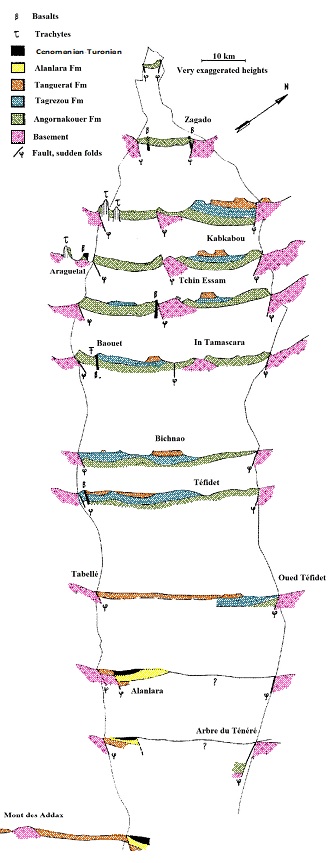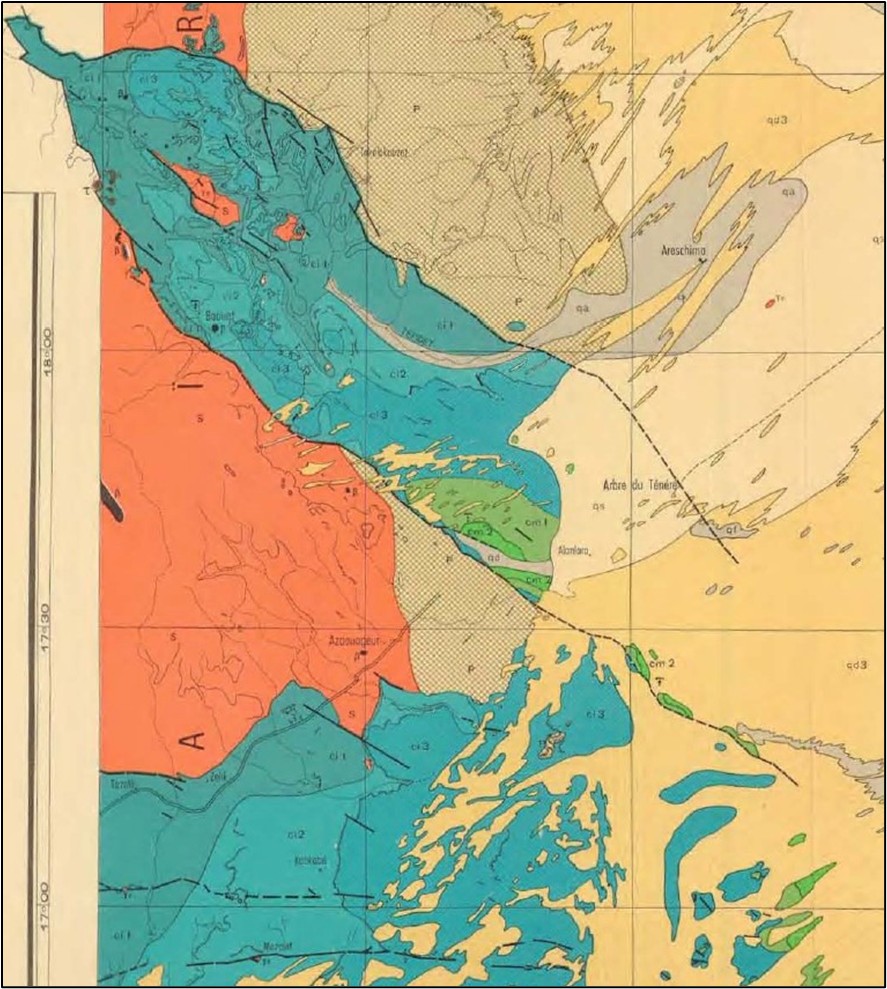Alanlara Fm
Type Locality and Naming
Accurate location not stated, however, see Fig. 1 for a general location. Faure (1959) for the name of the nearby town of Alanlara.
References: Faure, 1959, 1966; Greigert, 1966 ; Greigert & Pougnet, 1967; Fabre et al., 1983; Meister et al., 1994; Konaté et al., 2019.
Synonym: Equivalent(s): Farak Fm; Ezerza-Cheffadène Fm.
Lithology and Thickness
Faure (1959) selects the top of the formation just below the limestone horizon with Neolobites. It begins with black limestones containing lamellibranch debris (marine), then beige to yellow, fine-grained sandstones (continental), clay-limestone silts, and ends with gastropod-rich sandy limestones (marine). 200 m thickness.
Relationships and Distribution
Lower contact
Underlying unit is the Tanguérat Fm (of Téfidet Gr in Téfidet Sub-basin)
Upper contact
Overlying unit is the Arentigué Fm (Zoo Baba-Arentigué Fm)
Regional extent
East Niger Rift Basin - Téfidet Sub-basin
[Figure 1: Geological map of the Téfidet Sub-Basin and surroundings (Faure, 1966). The dark green stands for the Zoo Baba Fm; the pale green for the Alanlara/Ezerza Fm. In the Téfidet Sub-Basin, the blue color is a combination of the Tanguérat, Tagrezou and Angornakouer formations (Téfidet Gr). Outside of the sub-basin, it represents the Eckhar, Elrhas and Tazolé formations (Tégama Gr)]
GeoJSON
Fossils
Faure (1959) observed a series of clays with rare oyster debris (notably Ostrea deletrei - marine), conglomerates with bone debris of Ceratodus (freshwater), fine sandstones with Exogyra (marine), and finally sandstones and clays with vertebrate bones (Rebbachisaurus - continental). Rare molluscs, Dinosaurians.
Age
Depositional setting
Additional Information
The whole is folded.

